|
Your search criteria found 648 images Mission |
| My List |
Addition Date | Target | Mission |
Instrument
|
Size |

|
1998-03-02 | Europa |
Galileo |
Solid-State Imaging |
1400x1120x1 |
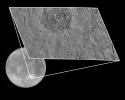
|
|||||

|
1998-03-02 | Europa |
Galileo |
Solid-State Imaging |
796x397x1 |

|
|||||

|
1998-03-02 | Europa |
Galileo |
Solid-State Imaging |
792x742x1 |

|
|||||

|
1998-03-02 | Europa |
Galileo |
Solid-State Imaging |
792x574x1 |

|
|||||

|
1998-03-02 | Europa |
Galileo |
Solid-State Imaging |
310x796x1 |
|
|
|||||

|
1998-03-02 | Europa |
Galileo |
Solid-State Imaging |
874x316x1 |

|
|||||

|
1998-03-02 | Europa |
Galileo |
Solid-State Imaging |
912x384x1 |
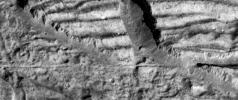
|
|||||

|
1998-03-02 | Europa |
Galileo |
Solid-State Imaging |
798x802x1 |

|
|||||

|
1998-03-06 | Jupiter |
Galileo |
Solid-State Imaging |
800x900x3 |

|
|||||

|
1998-03-06 | Jupiter |
Galileo |
Solid-State Imaging |
1300x1000x1 |

|
|||||

|
1998-03-06 | Jupiter |
Galileo |
Solid-State Imaging |
1300x1000x1 |

|
|||||

|
1998-03-06 | Jupiter |
Galileo |
Solid-State Imaging |
640x485x1 |

|
|||||

|
1998-03-06 | Jupiter |
Galileo |
Solid-State Imaging |
552x735x1 |

|
|||||

|
1998-03-06 | Jupiter |
Galileo |
Solid-State Imaging |
1600x1200x3 |
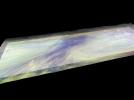
|
|||||

|
1998-03-06 | Jupiter |
Galileo |
Solid-State Imaging |
1600x1200x3 |

|
|||||

|
1998-03-06 | Jupiter |
Galileo |
Solid-State Imaging |
1600x1200x3 |

|
|||||

|
1998-03-06 | Jupiter |
Galileo |
Solid-State Imaging |
1600x1200x3 |

|
|||||

|
1998-03-06 | Jupiter |
Galileo |
Solid-State Imaging |
1600x1200x3 |

|
|||||

|
1998-03-06 | Jupiter |
Galileo |
Solid-State Imaging |
1600x1200x3 |

|
|||||

|
1998-03-06 | Jupiter |
Galileo |
Solid-State Imaging |
572x480x1 |

|
|||||

|
1998-03-06 | Jupiter |
Galileo |
Solid-State Imaging |
572x480x1 |

|
|||||

|
1998-03-06 | Jupiter |
Galileo |
Solid-State Imaging |
572x960x1 |

|
|||||

|
1998-03-06 | Jupiter |
Galileo |
Solid-State Imaging |
1300x1200x1 |

|
|||||

|
1998-03-06 | Jupiter |
Galileo |
Solid-State Imaging |
1300x1200x1 |

|
|||||

|
1998-03-06 | Jupiter |
Galileo |
Solid-State Imaging |
1300x600x1 |

|
|||||

|
1998-03-06 | Jupiter |
Galileo |
Solid-State Imaging |
1300x600x1 |

|
|||||

|
1998-03-06 | Jupiter |
Galileo |
Solid-State Imaging |
1300x1200x1 |

|
|||||

|
1998-03-06 | Jupiter |
Galileo |
Solid-State Imaging |
1300x600x1 |

|
|||||

|
1998-03-06 | Jupiter |
Galileo |
Solid-State Imaging |
1300x600x1 |
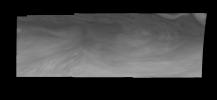
|
|||||

|
1998-03-06 | Jupiter |
Galileo |
Solid-State Imaging |
1000x1000x1 |

|
|||||

|
1998-03-06 | Jupiter |
Galileo |
Solid-State Imaging |
1000x1000x1 |

|
|||||

|
1998-03-06 | Jupiter |
Galileo |
Solid-State Imaging |
900x500x1 |

|
|||||

|
1998-03-06 | Jupiter |
Galileo |
Solid-State Imaging |
900x500x1 |

|
|||||

|
1998-03-06 | Jupiter |
Galileo |
Solid-State Imaging |
1300x1200x1 |

|
|||||

|
1998-03-06 | Jupiter |
Galileo |
Solid-State Imaging |
1300x1200x1 |

|
|||||

|
1998-03-06 | Europa |
Galileo |
Solid-State Imaging |
1018x1293x3 |

|
|||||

|
1998-03-06 | Europa |
Galileo |
Solid-State Imaging |
800x800x1 |

|
|||||

|
1998-03-02 | Europa |
Galileo |
Solid-State Imaging |
760x770x1 |

|
|||||

|
1998-03-26 | Io |
Galileo |
Solid-State Imaging |
410x460x1 |

|
|||||

|
1998-03-26 | Io |
Galileo |
Solid-State Imaging |
1152x659x1 |

|
|||||

|
1998-03-26 | Callisto |
Galileo |
Solid-State Imaging |
725x550x1 |

|
|||||

|
1998-03-26 | Io |
Galileo |
Solid-State Imaging |
346x346x3 |

|
|||||

|
1998-03-26 | Callisto |
Galileo |
Solid-State Imaging |
800x1075x1 |

|
|||||

|
1998-03-26 | Callisto |
Galileo |
Solid-State Imaging |
600x650x1 |

|
|||||

|
1998-03-26 | Io |
Galileo |
Solid-State Imaging |
646x646x3 |

|
|||||

|
1998-03-26 | Callisto |
Galileo |
Solid-State Imaging |
1450x700x1 |

|
|||||

|
1998-03-26 | Jupiter |
Galileo |
Solid-State Imaging |
1200x1600x1 |

|
|||||

|
1998-03-26 | Jupiter |
Galileo |
Solid-State Imaging |
1000x1200x1 |

|
|||||

|
1998-03-26 | Jupiter |
Galileo |
Solid-State Imaging |
1000x1200x1 |

|
|||||

|
1998-03-26 | Jupiter |
Galileo |
Solid-State Imaging |
600x600x1 |

|
|
||||

|
1998-03-26 | Jupiter |
Galileo |
Solid-State Imaging |
640x485x1 |
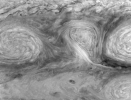
|
|
||||

|
1998-05-08 | Europa |
Galileo |
Solid-State Imaging |
520x260x3 |

|
|||||

|
1998-05-08 | Europa |
Galileo |
Solid-State Imaging |
1092x1428x3 |

|
|||||

|
1998-05-08 | Callisto |
Galileo |
Solid-State Imaging |
930x550x3 |

|
|||||

|
1998-05-08 | Callisto |
Galileo |
Solid-State Imaging |
749x344x3 |

|
|||||

|
1998-05-08 | Io |
Galileo |
Solid-State Imaging |
1870x635x3 |

|
|||||

|
1998-05-08 | Io |
Galileo |
Solid-State Imaging |
1927x619x3 |

|
|||||

|
1998-05-21 | Europa |
Galileo |
Solid-State Imaging |
2700x2200x1 |

|
|||||

|
1998-05-21 | Europa |
Galileo |
Solid-State Imaging |
1042x643x3 |

|
|||||

|
1998-05-21 | Europa |
Galileo |
Solid-State Imaging |
3500x2220x1 |

|
|||||

|
1998-05-21 | Europa |
Galileo |
Solid-State Imaging |
800x400x1 |

|
|||||

|
1998-05-21 | Europa |
Galileo |
Solid-State Imaging |
814x560x1 |
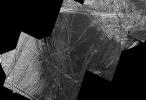
|
|||||

|
1998-05-21 | Europa |
Galileo |
Solid-State Imaging |
856x407x3 |
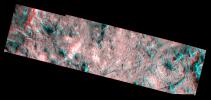
|
|||||

|
1998-05-21 | Europa |
Galileo |
Solid-State Imaging |
4000x2024x1 |

|
|||||

|
1998-06-10 | Jupiter |
Galileo |
Solid-State Imaging |
900x900x3 |
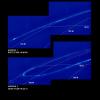
|
|||||

|
1998-06-10 | Jupiter |
Galileo |
Solid-State Imaging |
900x950x3 |

|
|||||

|
1998-06-10 | Jupiter |
Galileo |
Solid-State Imaging |
900x950x3 |

|
|||||

|
1998-06-10 | Jupiter |
Galileo |
Solid-State Imaging |
900x900x3 |

|
|||||

|
1998-07-02 | Io |
Galileo |
Solid-State Imaging |
581x900x3 |

|
|||||

|
1998-07-15 | Ganymede |
Galileo |
Solid-State Imaging |
790x1413x1 |

|
|||||

|
1998-07-15 | Ganymede |
Galileo |
Solid-State Imaging |
392x398x1 |

|
|||||

|
1998-07-15 | Ganymede |
Galileo |
Solid-State Imaging |
707x1049x1 |

|
|||||

|
1998-07-15 | Ganymede |
Galileo |
Solid-State Imaging |
813x753x1 |

|
|||||

|
1998-07-15 | Ganymede |
Galileo |
Solid-State Imaging |
392x398x1 |

|
|||||

|
1998-07-15 | Ganymede |
Galileo |
Solid-State Imaging |
692x480x3 |

|
|||||

|
1998-07-15 | Ganymede |
Galileo |
Solid-State Imaging |
615x519x1 |
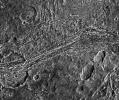
|
|||||

|
1998-07-15 | Ganymede |
Galileo |
Solid-State Imaging |
800x798x1 |
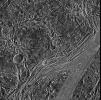
|
|||||

|
1998-07-15 | Ganymede |
Galileo |
Solid-State Imaging |
531x361x1 |

|
|||||

|
1998-07-15 | Ganymede |
Galileo |
Solid-State Imaging |
949x559x1 |

|
|||||

|
1998-07-15 | Ganymede |
Galileo |
Solid-State Imaging |
506x360x1 |

|
|||||

|
1998-07-15 | Ganymede |
Galileo |
Solid-State Imaging |
797x798x1 |

|
|||||

|
1998-07-15 | Ganymede |
Galileo |
Solid-State Imaging |
706x551x1 |

|
|||||

|
1998-07-15 | Ganymede |
Galileo |
Solid-State Imaging |
782x784x1 |

|
|||||

|
1998-07-15 | Ganymede |
Galileo |
Solid-State Imaging |
900x600x1 |

|
|||||

|
1998-09-15 | J Rings |
Galileo |
Solid-State Imaging |
2663x1418x1 |

|
|||||

|
1998-09-15 | J Rings |
Galileo |
Solid-State Imaging |
1078x636x1 |

|
|||||

|
1998-09-15 | J Rings |
Galileo |
Solid-State Imaging |
2016x1529x3 |

|
|||||

|
1998-09-15 | Amalthea |
Galileo |
Solid-State Imaging |
1539x1066x1 |

|
|||||

|
1998-09-15 | Amalthea |
Galileo |
Solid-State Imaging |
1539x802x1 |

|
|||||

|
1998-09-15 | Io |
Galileo |
Solid-State Imaging |
471x404x3 |

|
|||||

|
1998-09-15 | J Rings |
Galileo |
Solid-State Imaging |
2560x1920x3 |
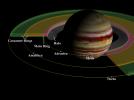
|
|||||

|
1998-09-15 | J Rings |
Galileo |
Solid-State Imaging |
1800x2700x3 |

|
|||||

|
1998-10-13 | Callisto |
Galileo |
Solid-State Imaging |
1422x1252x1 |

|
|||||

|
1998-10-13 | Callisto |
Galileo |
Solid-State Imaging |
800x799x1 |

|
|||||

|
1998-10-13 | Callisto |
Galileo |
Solid-State Imaging |
720x703x1 |

|
|||||

|
1998-10-13 | Europa |
Galileo |
Solid-State Imaging |
2686x2494x1 |

|
|||||

|
1998-10-13 | Callisto |
Galileo |
Solid-State Imaging |
6490x13101x1 |

|
|||||

|
1998-10-13 | Io |
Galileo |
Solid-State Imaging |
1054x352x3 |

|
|||||

|
1998-10-13 | Jupiter |
Galileo |
Solid-State Imaging |
880x620x3 |

|
|||||

|
1998-10-13 | Io |
Galileo |
Solid-State Imaging |
689x350x3 |

|
|||||

|
 |
 |
 |
 |
 |
 |
 |

|
| 1-100 | 101-200 | 201-300 | 301-400 | 401-500 | 501-600 | 601-700 |
| Currently displaying images: 401 - 500 of 648 |